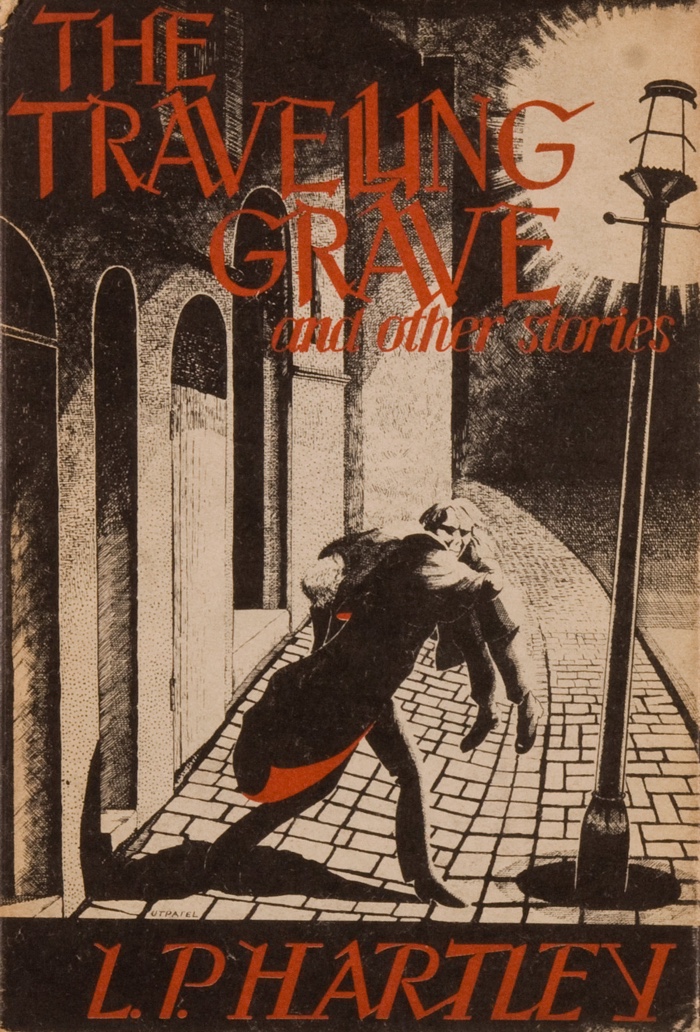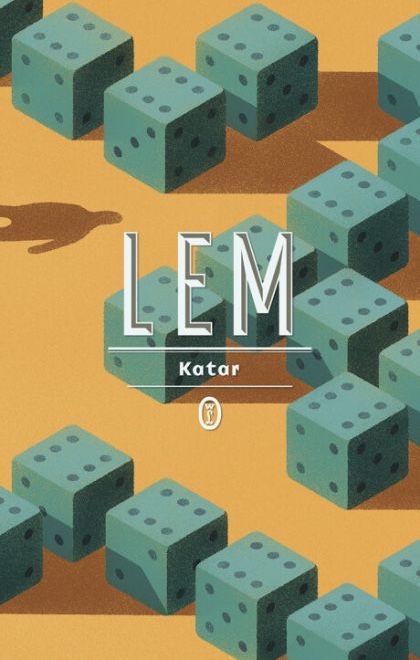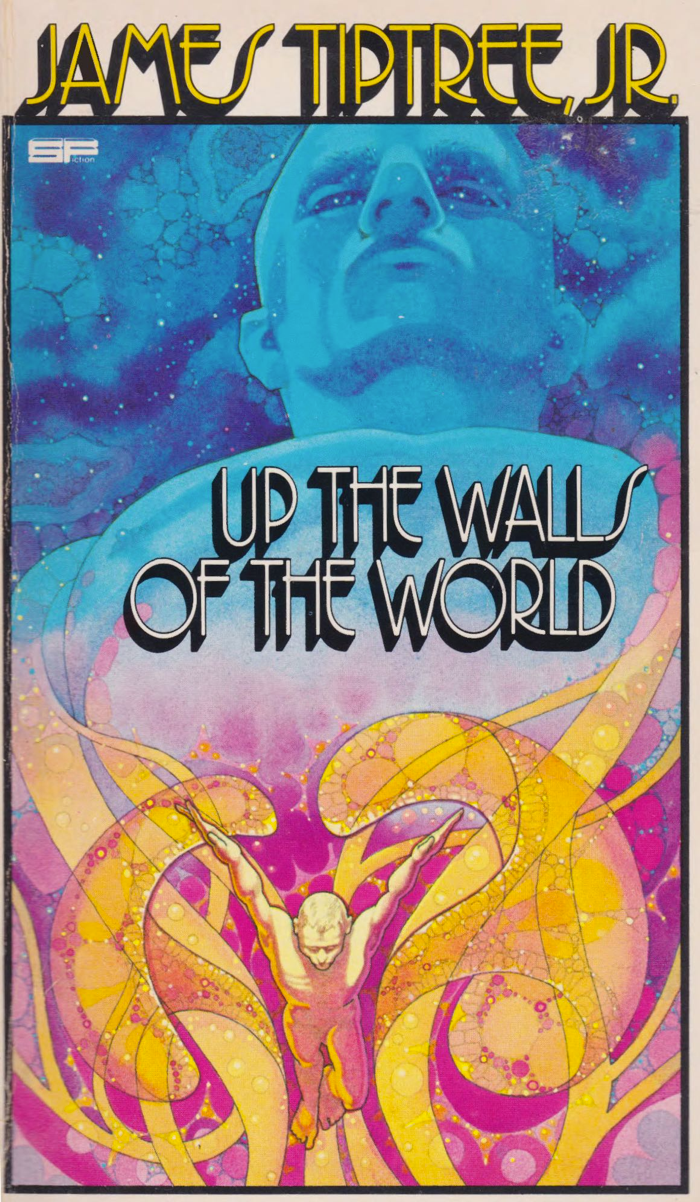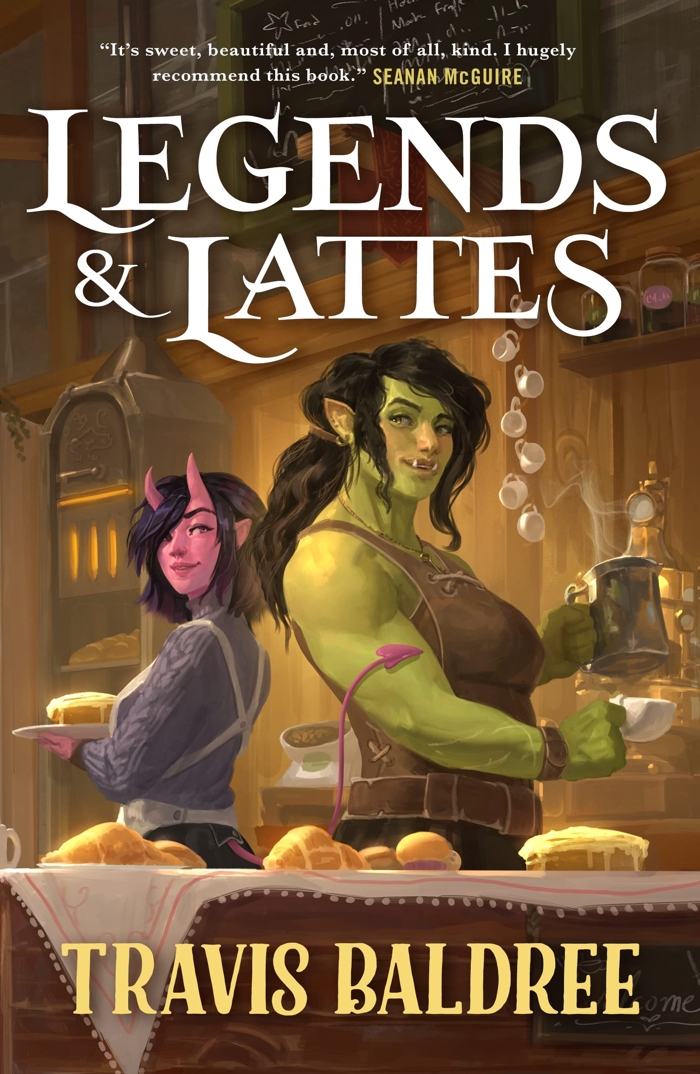1.
A critical term used in science fiction and fantasy and rarely any other genre is worldbuilding. Hardly anybody talks about how other genres build worlds because other genres take place in a simulacrum of reality. The real world, we assume, doesn’t need to be built.
The most hapless world builders, it’s agreed, assemble the world before the story. This is not always bad—for some writers thinking up a place and asking “what could happen here?” might get results. But some wannabe writers get stuck perpetually constructing their worlds like cosmological Winchester Mystery Houses and never get around to making anything happen in them.
Which makes sense when you realize what they’re building: pantheons of gods, lists of kings, timelines of historic wars, magic systems—what M. John Harrison calls “the attempt to exhaustively survey a place that isn’t there.” I see how they might want to start with the big picture—think how much of the world today was shaped long ago by the Roman empire, or the Reformation. But exhaustive-survey cosmology is mostly not story-stuff—at least, not the stuff of the stories these writers imagine themselves telling. Rome shaped our world, but how many contemporary novels need to explain how? You don’t need to know who founded London to get the point of David Copperfield.
In Aspects of the Novel E. M. Forster made a famous distinction between story and plot. For Forster story is a description of things happening, a plot is that plus cause and effect. “A plot is also a narrative of events, the emphasis falling on causality. ‘The king died and then the queen died,’ is a story. ‘The king died, and then the queen died of grief’ is a plot.”
He has a point, although I can’t read this without wincing because, dammit Forster, you’ve got those words the wrong way round—“plot” is a better word for the bare description and “story” for that plus meaning. Either way meaning is the point—“the queen died of grief” is not just cause and effect, it’s a cause and an effect readers immediately get. They can start thinking about what work the queen’s death is doing in the story. By contrast, it’s going to take Herculean authorial labor to guide the reader to a point where “after the trade negotiations over the Blorple crystals fell apart in year 37 of the Meat Century, the Duke of Gorp went to war on Mustachia” tells them anything.
The world is not the point of SFF. It’s an element a story uses to say something, a vehicle for expressing a point of view. The point of view comes before the world; it’s the stuff the world is built of.
2.
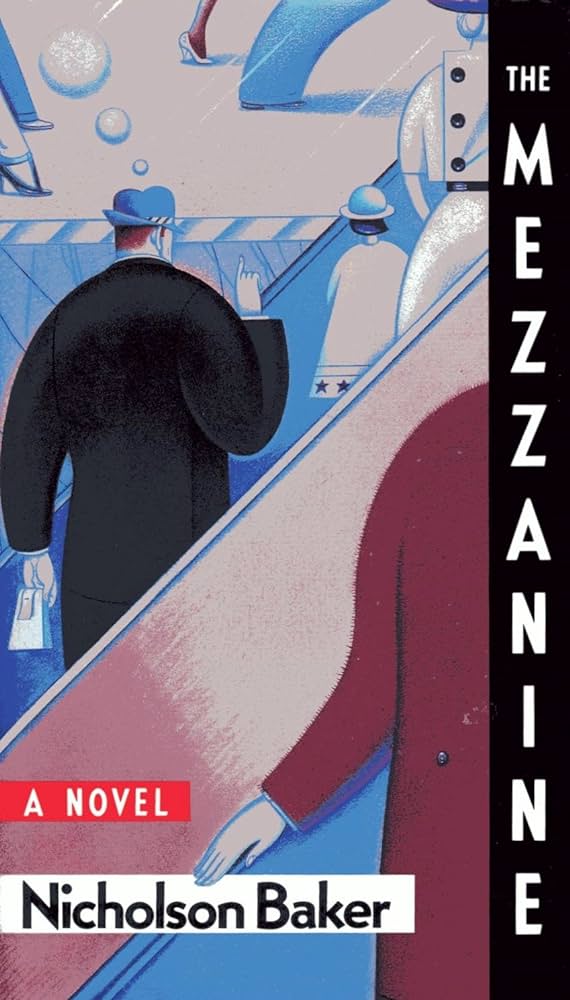
Nicholson Baker’s The Mezzanine is about an office worker (who is maybe Baker, or maybe not) buying new shoelaces on his lunch break. The whole novel takes place in the narrator’s reverie as he rides the elevator back to his office. Most SFF fans would not consider this a plot in the Forster sense but its mundanity makes it a usefully extreme demonstration of how to infuse descriptions with meaning.
The Mezzanine notices ordinary, everyday actions in precise detail. Here’s the narrator opening a milk carton: “the radiant idea that you tore apart one of the triangular eaves of the carton, pushing its wing flaps back, using the stiffness of its own glued seam against itself, forcing the seal inside out, without ever having to touch it, into a diamond-shaped opening which became an ideal pourer…” From there the narrator’s thoughts open out into the history of milk packaging, and memories of home milk delivery—how it worked, how it gradually ended.
He recalls the precise movements you make to use a stapler. The unspoken rules governing a trivial interaction with a coworker. The relative merits of different strategies for putting on your socks. The efficiencies we develop around daily routines, like his discovery that when he forgets his deodorant there’s a way to put it on without taking off his shirt. The feelings we have and unconscious calculations we make over actions so commonplace we long ago stopped noticing them.
What makes The Mezzanine more than a novella-length catalog of trivialities is that Baker is deeply interested in these details. His narrator remembers placing objects alone against white cardboard backgrounds when he was a child, how it made any object seem worthy of attention. Trivialities segue into bigger philosophical questions—this is not just a cause-and-effect plot but a chain of ideas. How do I know when I’m an adult? What if I’m not important? What does “important” vs. “unimportant” even mean when applied to human lives?
What’s life about? We remember big events—a wedding, a birth, the first day at a new job. But the time we spend on those landmarks pales before the time we spend sitting, typing, eating, shopping, commuting, tying our shoelaces. Inane interactions with people we barely know. Putting on our clothes in the morning and taking them off at night. These time-fillers and maintenance activities are in The Mezzanine “the often undocumented daily texture of our lives.” Disregarding details means missing most of your life.
The narrator is struck by a line from Marcus Aurelius: “Manifestly, no condition of life could be so well adapted for the practice of philosophy as this in which chance finds you today!” The Mezzanine argues we should philosophize where chance finds us, take an interest in everything we spend our time doing whether or not it’s interesting.
3.
Twenty years ago (I shriveled up like a leaf as I typed that) a parody by a writer named Mark Rosenfelder went the 2004 equivalent of “viral”.“If all stories were written like science fiction stories” described an airplane trip in the explanatory voice of golden age SF:
The surprisingly large passenger area was equipped with soft benches, and windows through which they could look down at the countryside as they flew 11 km high at more than 800 km/h. There were nozzles for the pressurized air which kept the atmosphere in the cabin warm and comfortable despite the coldness of the stratosphere.
Sizable chunks of golden age SF stories took this explanatory tone, infodumping about their fictional innovations to the reader. Skim any of the out-of-copyright SF stories on Project Gutenberg and you’ll probably find something similar.
But it’s also a lot like what Nicholson Baker is doing all through The Mezzanine! Compare it to the bit about the milk carton. But the parody, like the middling SF it’s parodying, is flat, affectless. Anhedonic. That’s not The Mezzanine: to Baker a milk carton is a “radiant idea.” As the narrator describes tearing open its eaves and using its seam against itself you feel his pleasure in its workings.
The Mezzanine is suffused with joy. Baker approaches milk packaging and escalators and shoelaces with—heck, I’ll just say it—a sense of wonder. The proliferation of shampoos in CVS is an astonishment, the perforations on a paper towel an underappreciated technological miracle. All but the best SFF struggles to infuse deep time and infinite space with wonder; Baker can find it in an office men’s room.
4.
It’s a commonplace in SFF criticism that infodumps are boring. But infodumps aren’t the problem.
The Mezzanine is a fascinating book and, again, all infodump. The key is that its essays are not just plot-scaffolding, or world-scaffolding. They aren’t purely functional prose getting the book from one place to another or showing how neatly its world fits together. They’re part of the book’s arguments.
An element of a story that does not even tangentially tie into the story’s themes is an element that did not interest the writer. Any element of a story not infused with meaning will be boring, whether it’s an infodump or a love scene or a climactic fight. The point of view comes before the world.
5.
Sometimes Baker’s narrator wonders what it means to be the kind of guy whose philosophy dreams of shoelaces and paper towels: “I was the sort of person whose biggest discoveries were likely to be tricks to applying toiletries while fully dressed. I was a man, but I was not nearly the magnitude of man I had hoped I might be.” On the other hand, a footnote praises people who don’t seem to have accomplished much yet know “all that can be known about several brief periods of Dutch history, or about the flowering of some especially rich tradition of terra-cotta pipes.” These people, Baker declares, quietly sustain civilization.
Most SFF novels are about heroes, people with exaggerated agency. Other people may not think they’re important, but they wind up in the right place at the right time to change the world. They’re people of magnitude. This seems unremarkable to SFF fans but is one of the strangest aspects of SFF. How many mainstream novels are about heroes? Not a lot. Most find meaning in the lives of people who don’t bend the world to their will. Even in other kinds of heroic genre fiction—adventure stories, mysteries—heroes solve small problems, intervening in a few lives. (Sherlock Holmes solves mostly domestic problems, just a few of national significance, and never saves the world.)
Most of us live in the long tail of historical significance. The books that speak most deeply to most people deal with problems of our magnitude and help us come to terms with our mundanity. Much of SFF assumes without thinking about it—and, in assuming, inadvertently argues—that the only people of significance or interest are the ones whose lives take place on the cosmological/world-historical scale of exhaustive worldbuilding. Part of becoming an adult is accepting that you’re really Toiletry Application Guy, and that being this kind of person is okay. That so much SFF daydreams about being someone of greater magnitude is a sign of its continued immaturity.
(It’s a side issue, but there’s also the political naïvety encouraged by stories where the world is changed exclusively through personal heroism instead of the long-term cooperation and compromise change tends to require in real-world democracies.)
6.
Some SFF exhaustively surveys the world. Some SFF has what might be the opposite problem. (Although it’s not so opposite that the same story can’t tend in both directions, as bad epic fantasy often does!) We’re on a spaceship, but what kind of spaceship? A swordsman walks into a tavern, but what kind of tavern? Most fiction doesn’t stop to describe the world at length but will drop a few important details, enough to clue us in to what’s significant. Some SFF assumes its readers come equipped with a mental store of stock genre furnishings. It’s assumed we’ve seen spaceships and fantasy taverns before and know what they look and feel like.
Based on the tone of a story we can say this spaceship must be like the Enterprise, and that one like the Millennium Falcon. In the age of remakes and remixes this might even be what the writer wants. But these spaceships are indistinguishable from those earlier spaceships. Specificity is lacking. What’s the operating system like on the computers? Is there a background noise that gets on your nerves until one day you stop noticing? Are the chairs comfortable? If it’s a city-sized ship, do people get around on bicycles? Has the crew figured out a trick to keep the sliding doors open?
What a character notices about their world tells us about the character. What the narrator asks us to notice about the world tells us about the world, and about the narrator, and hints at the story’s preoccupations. A story whose narrator and characters don’t notice much, asking the reader to fill in the details of the world, is leaving opportunities to communicate on the table. A spaceship that’s not specific is not significant, in the sense that it doesn’t signify anything.
Once when asked what she’d change about her work, Ursula K. Le Guin joked that she regretted not mentioning Anarres’ street-corner pickle barrels in The Dispossessed. She didn’t mean she’d passed up a chance to explain how pickle barrels were a cosmologically important puzzle piece in the Hainish universe. It’s a detail that would have said something unique and evocative about Anarres.
It’s hard to connect with a world when the immediate environment doesn’t feel specific—if characters aren’t noticing the details that should matter most to them. We’ve seen an office and a CVS; they’re naturally part of our stock furnishings. But The Mezzanine notices specific meaningful details that remind us of what it is like to exist in them—how a drug store feels. Exhaustive SFF instead spends its time on abstractions like magic systems or some kind of pixie/gnome war from fifty years ago. It doesn’t philosophize where chance finds its characters.
Let’s return to that M. John Harrison line, part of a short online rant that stuck in a lot of memories, mine included, calling worldbuilding “the clomping foot of nerdism”:
It is the attempt to exhaustively survey a place that isn’t there. A good writer would never try to do that, even with a place that is there. It isn’t possible, & if it was the results wouldn’t be readable: they would constitute not a book but the biggest library ever built, a hallowed place of dedication & lifelong study.
Worldbuilders want their worlds to feel real but it’s hard to get that feeling from an exhaustive survey. Lifelike worlds aren’t built from the top down, but from the characters and their surroundings out. They allow for ambiguity, lacunae in our knowledge, the way reality feels no obligation to make sense. Exhaustive worldbuilding aims for worlds logical enough to be mastered, which aren’t worlds at all but clockwork orreries. We can hear the gears click.
7.
The Mezzanine focuses on the most mundane details of an insignificant office worker’s uneventful lunch hour. It feels more real than the most encyclopedic and carefully worked-out photocopy of Middle Earth because of the loving attention it pays to the world. “Worldbuilding” is a term applied to SFF but realist fiction also builds worlds, using a lot of the same techniques. (I’d say SFF’s worlds are imaginary while realist fiction’s world is real—but is it? Maybe it gives us versions of the real world as filtered through different writers’ points of view.) Properly done worldbuilding is not so much building as describing a world, starting where the characters are and radiating out to wherever the writer’s themes take them.
In M. John Harrison’s The Sunken Land Begins to Rise Again something big is happening to the world, a literal sea change. Its two protagonists stay on the margins, see only its edges; like Nicholson Baker they attend to what is striking and memorable in their own lives. That attention to life is the stuff the book’s meaning is built from. We don’t need the details on what’s happening to the larger world. Harrison philosophizes where chance finds him. The Sunken Land is the most vivid work of SFF I read last year.
It’s time for SFF to dare to be trivial.
